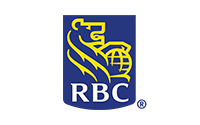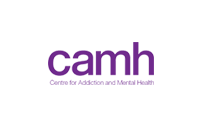While the shift to virtual work may have been precipitated by the necessary work-from-home measures in 2020 due to COVID, plans for the new hybrid workforce are becoming less reactionary and more deliberate now. This transition is proving to be challenging in many workplaces and there is no question that the post-pandemic world of work is going to look different. Leading a hybrid team will require adaptability to change and an openness to experimentation.
Leaders need to successfully navigate several different types of tensions in order to be effective in today’s workplace. Being a leader continues to become increasingly complex, especially when choosing which style of leadership to use in any given situation.
With unprecedented levels of virtual team collaboration, more flexible work hours, and less time spent commuting, it’s no wonder that, as has been widely reported, global productivity increased dramatically during the pandemic…although these gains undoubtedly came at a high cost for some individuals and organizations.
The last 1 ½ years have been challenging to say the least due to the Pandemic. However, there have also been great opportunities as well. There is more emphasis on human-centred approaches to working including greater empathy and flexibility by leaders and organizations. As well, employees have demonstrated their commitment to achieving the organization’s purpose and goals while working remotely. For many organizations, it has also brought restructuring and changes in team membership a...
The most important skill to acquire in our new digital age? Surprisingly, it is the ability to learn. In a recent report, McKinsey describes “intentional learning” as the most fundamental skill for professionals to cultivate in the coming decades, noting that “few adults have been trained in the core skills and mindsets of effective learners”.
When working with senior leaders, one of the most often asked questions is “ how do I and my team collaborate more effectively across boundaries”. There it is…..that timeless, age-old question. Organizations have talked about cross-collaboration and reducing silos for decades!
Peer coaching is about cultivating a network of allies that can provide mutual support in creating positive change to improve performance. In addition to its many benefits of learning, these relationships also address the roots of loneliness at work. Employees gain new perspectives on their issues and opportunities.
2020 will definitely go down as a year to remember. If there was ever a year that challenged our personal resilience and that of teams it was this one. With the COVID 19 pandemic, working from home; lockdowns and systemic racism issues it was a tough one. Resilience is often thought of as the “ability to bounce back”.
Cross-functional teams have become a common feature of today’s increasingly diversified organizations. When designed well, these teams have the ability to accomplish organizational goals with increased efficiency, faster decision making and better resource allocation.
Are You Struggling to Maintain Balance While Working from Home? Here are some practical tips and strategies to help you maintain perspective. We help coach others to thrive instead of just survive!
Over the last couple of months, many teams and leaders have experienced working virtually, many for the first time. Working with geographically dispersed teams can have challenges even without a pandemic to consider on top of that. Over the next few months, some organizations will have employees returning to the workplace which might mean leaders supporting both co-located and virtual team members.
What happened to the "pause" that everyone shared over two weeks ago? Anyone else feeling a little overwhelmed now trying to respond to the rapidly changing conditions around us? It is true that in times of crisis, leaders must often make bold and quick decisions. Employees are looking for support, guidance and direction. However, are we pausing and making intentional, thoughtful decisions, or are we simply reacting to our environment and operating out of "flight or fight" mode?
To cope with the new reality of constant and disruptive change, organizations are moving away from the traditional style of leadership (command and control) to one that is more collective and involves the manager providing more coaching and feedback.
The way you behave as a team is governed by a set of unwritten rules and behaviours which make up your team culture.
A shared purpose is not about economic exchanges. It reflects something aspirational and shares how the people involved with an organization are making a difference, giving them a sense of meaning and drawing their support.
Leading teams from a distance can be challenging and especially difficult to manage. Communication and collaboration are critical to any team’s success.
Organizations thrive or fail based on their ability to effectively use people, processes and technology to develop the performance and capabilities of their organization and deliver value.
Trust is the cornerstone of effective relationships. The job of leaders is to extend trust first. But not everyone does that. Learn how important trust is in leadership.

















